A bevy of books were published timed for the 50th anniversary of Stonewall but few as fascinating and maddening as Indecent Advances: A Hidden History of True Crime and Prejudice Before Stonewall. In it, James Polchin uncovers queer stories from the crime pages, sensationalized, lurid, euphemistic -- that show how violence against gay and bisexual men was often blamed on the victim's gender and sexual "deviance," letting the killers off scot-free.
The Advocate: You discuss how crimes against queer men were portrayed by the media, the courts, and psychologists with queer men often seen as both the victims and the perpetrators of their own crimes, sort of willing participants in their own demise.
James Polchin: I talk about the moment in the '30s, during the Depression...where this anxiety about sex criminals really becomes a national concern. It's something that the press takes on; it's something that the FBI takes on and really makes it a kind of crusade. And the sex criminal at that era was a big net of folks, from... pedophiles, to just the average homosexual. So they are a range of folks that fell in that anxiety and those concerns, and it kind of amped up in the sense of criminalizing all gay men at that time. And I would say, that's where that moment happens, where gay men are really seen as culpable for the kinds of assaults and crimes they experience.
You talked about one case where the FBI cleared over 20,000 suspects for one case and used it to build a huge database of "perverts." Meanwhile, Black newspapers were quick to point out how "sex crimes" had become this huge national concern while at the same time, the justice system ignored the sheer brutality and constancy of lynchings of African-Americans.
Right. That was fascinating to me because, of course, you know, what I know of that period around sex crimes is very much a kind of universalizing of this concern. But when you look at the editorials in the African-American press, they were, of course, saying, "What about the crimes that are being committed against African-Americans? Where's the public outcry? Where are the FBI investigations for these crimes?" Which there weren't any, right? It also points us to what was really at stake in making these bigger claims of sex criminals and sex crimes, they weren't really about concerns for crime, they were really trying to target certain kinds of practices, and, as I say in the book how the FBI was trying to use this as a way to have some authority over morality in the country.
Did the gay media eventually play a similar role in these particular crimes, you know, by calling out the hypocrisy?
There really wasn't any gay media at the time, or press, as such; that's something that emerges by the '50s. I do talk a little bit about that with the Mattachine Society -- with an offshoot of that early Homophile Rights Group, as they were called -- and ONE: it was a publication that generated pretty substantial subscription, given the times and given the criminality that surrounds such publications. And they thought it [important] to respond to these crime articles. There's a sense that the readers, the subscribers, were sending in these articles from the local papers. And so, you can see in ONE how they would re-publish these articles, and then offer commentary on them as a way to, again, counter the media representation, as well as the jury response to these crimes, or the courts' response to these crimes. So, there's really a moment by the mid- to late-'50s where gay activists would start to really comment on the crimes themselves.
One of the cases you looked at was of the gay man, John Murrett's murder in Jackson, Miss. His killers were tried in a case trumpeted as an example of the state's fine justice system, even though it was going at the same time of the trial of Emmett Till's killers, which was really an example of a truly fucked up criminal justice system, for lack of a less sophisticated phrase.
That's a great phrase actually.
Did you get the sense from your research that Murrett's murderers were only fairly punished as a way to offset what was going on at the same time with Emmett Till's case?
It does seem that given that they were running parallel, these two crimes, and that Mississippi was on the national stage, along with other states in the South, in terms of their lack of response to crimes and horrible brutal murders of African-Americans lynched in that era. And so it seemed like this Murrett case was an opportunity for the Mississippi law enforcement organizations, as well as local police, to really promote themselves, "Look how quickly we got this killer, and look how quickly we brought them to justice." I do think, with that case, the two killers were from the North... and I think that played out as well in the growing Civil Rights era... I think their punishment and sentencing was part of that sense of Southern identity in the '50s, as well.
Yeah, that makes a lot of sense to me, actually. And race played a factor in prosecutions, and largely the victims, that you found in your research, were white men. Can you talk a little bit more about that?
There are some cases from African-American press that are trying to show how the crime was portrayed in the mainstream press versus African-American press. But, for the most part, I was looking at mainstream press, and, as I note, crime at that point was as segregated as society was. So, crime, which involved black men killing a white man, would be in the mainstream press, but the other way around would not. And crimes that involved two black men would never even make it to the mainstream press at all. Diving into some of the African-American press where they were engaged with these crimes, and how they reread the crimes, particularly in the 1950s -- it was interesting how the African-American press would read the story much more along racial lines than the mainstream press, in some ways. But, you know, what I was working with were the mainstream press articles, and they were mostly about the murders of white men.
I was interested that, even in the introduction, you talk about how in the English colonies in America, sodomy was actually punishable by death. But even then, it was the lower classes who were more likely to be punished. Is there a thread between these two things, how lower classes and more likely to be punished and African-Americans are more likely to be punished for victimizing white people?
I hadn't thought about that, but that's a good [point]. I talk about how class plays out, particularly in the '30s. The concern for homosexuality among the working class is a thread that comes through from the 19th-century on. By the 1920s, where you have more play around gender and sexuality in the post-World War I period, it becomes increasingly a concern for homosexuality among the middle class. And I think a big part of that is because homosexuality was seen as a crime, as one of many crimes, and the idea that the working class were more prone to crime feeds into that kind of thinking in the era, as well as bringing in African-American men into that. But of course there is -- throughout this period -- a lot of debate by criminologists, by psychologists, about origins and meanings of homosexuality, and that, to me, was also fascinating, to take these crime stories and see how they're playing out some of those debates around class, race, and sexuality, and how they are interconnected.
I was struck, when reading your book, by what I saw as parallels between the murders of queer men that you profiled in your book, and the murders of trans women today. Including in trying to track these crimes. When you were trying to look at the breadth of crimes against queer men, you couldn't really search "homosexual" because that wasn't really a term until a certain point, so you ended up looking up phrases like "man slain in hotel." Crimes against trans people are hard to track because trans people are often misgendered in police reports, and both queer men and trans women are targets and victims of crime and prejudice. I wanted to just get your thoughts on that.
I think it's a useful observation to think about that relationship because I do think that one part of this history is both to recover these stories that haven't been read since they were first published, for the most part, to tell a history that hasn't been fully shown before. But, also, to think about the legacy of that history, and so the fact that queer people, trans [people], are still subject to this kind of violence, this sense of criminal sensibility, to think of them as criminal in some way.
What can we learn about the victimization of queer men in history that we could apply to trans people today?
There are two thoughts that I have. One is that getting the stories right is really important, getting the visibility to these crimes is really important, that I think we still struggle with in the press. I wonder how many people [hear about] trans murders, beyond the folks who are on the feeds for the [LGBTQ] press.
And, also, just the kind of legal response, the criminal justice system and its response to these crimes, and how they're taken seriously. One thing that came out of the research -- I think that the Murrett case is another example of it -- is ... I wanted to get to a national sense by looking at different crimes around the country, but often these are localized, too. And so to think about on the state and municipality level, how these crimes are dealt with, and it's so uneven across the U.S., even now. And I think that's something that we're still trying to make an issue, still trying to protest against, in terms of having more consistency and more visibility for these crimes.
Your book essentially ends prior to the Stonewall uprising, but that clearly wasn't the end of this kind of treatment. Why did you decide to end there?
One of the things I wanted to point to in the conclusion... is that, at Stonewall, the violence against queer citizens, and violence, particularly criminalizing queer citizens, became really central to the movement through the '70s. Violence itself becomes part of the movement, right, anti-violence organizations, anti-violence support, and educating the police, and doing those kinds of efforts become part of the movement. There is that shift where, by the '70s and '80s, the center of gay and lesbian rights is really about decriminalizing in different ways, as well as addressing, particularly by the '80s and '90s, addressing this politics of violence on the local, as well as the state level, across the country. I think it does take on a different meaning. [It's] no longer invisible, it's no longer something that is not discussed in the press, but something that increasingly becomes a thing to make more visible.
Yeah, it's actually essentially out of its own closet after that.
Yeah. Also, going back to that legacy question, I still think that we're trying to find ways to tell the stories of this violence that we experience. As I'm talking about this book over the last couple months, many people have stories that they're telling me, of friends or of themselves, and so I think we're not at that moment yet... where these kinds of experiences of assault or murders become a story that we can tell right. I think that people still feel ashamed of them.
Nearly every queer man I know my age or older has a story of at least being beaten up once, or robbed, or something much worse. A couple years ago, a friend of mine was beaten and robbed by a man he met on Grindr. Do you see in our future a generation of men who don't get beaten up in high school, who don't have to suffer through an assault at one point in their lives, just for being queer?
I would hope. I mean I think that's the effort right now. We see the spike in the anti-violence reporting in the last couple of years [and] in reports of assault. That's a spike in reporting, but does that mean that the assaults are themselves going up? I don't know going down the road, how these kinds of violence and attacks will play out. Or how they will change... Some of my friends said, "Oh, there are so many young people I know who need to read this book because they are unaware of the kinds of prejudices and brutal violence that were happening in the past."
That's a good thing if this is not a part of their lives. It's interesting though in so many cases in the book, I just kept seeing parallels with what's happening today. There are a few different stories where you see gay or bi men targeted by the same white young men who targeted Black and Jewish people, and that feels like a parallel to what we're seeing with the white supremacist movement right now.
I think that's true. One of the things I wanted to do in this book was to really contextualize it in the cultural moment. The early '20s [period] that I talk about, this moment that was incredibly xenophobic, where we see a rise of the KKK, where we see a huge anti-immigrant sentiment, very much echoing our current moment. The queer crimes themselves fall in that era, that thinking, that ideology. And so I do think it's important to consider how anti-queer violence is part of bigger narratives going on at the time, whether that's the xenophobia of the '20s or the anti-Communist Cold War rhetoric of the 1950s. This kind of violence and criminalization of queer men is not distinct from any of those bigger narratives going on.
One of the stories I was struck by is set in Manhattan Beach, which is a suburb of L.A. In 1936, when William Haines and Jimmy Shields were beaten, and they and their 20 friends are literally run out of town by a mob of 100 people. We had a case in Manhattan Beach in 2012 where 18 men were arrested in a sex sting at the Manhattan Beach public restroom. So, how far have we come?
I didn't know about the 2012 raid... This ebb and flow of moral panics seems to be a big legacy of that period that I wrote about from the '30s on... It's interesting to look at a case and see how you can still see simmering elements of it in that town, in that place, in that county... even decades after Stonewall. One of my more fascinating cases in the book is the one with William Simpson, he's an airline pilot in 1956 in Miami, and his murder provokes this whole crusade against homosexuals in the city. And what the crowd did to Haines on a really local level in 1936, the newspapers and the police in Miami were doing to the larger community of homosexuals, like, "cleaning up this town." Simpson's murder, where he picked up this 19-year-old and the [young man] claimed that Simpson came on to him and he had to kill him, that provoked this big concern about homosexuals in Miami at a particular moment in the city's effort to transform itself. But what's interesting is that you can see very clearly a thread of that 1956 case in what happens in the late '70s with the crusade against equal rights for gays and lesbians and the repeal of those ordinances in that moment of '77, '78. So, there are definitely echoes in a number of these cases, and often around that ebb and flow of sex panics, and I'm often wanting to think about who is benefiting from any one of these sex panics, and what agenda or politics really are benefiting in targeting and criminalizing queer folks at that particular moment.
It's interesting how the echoes of these crimes impact a region's perspective. I'm from Idaho and we had a very famous case, the Boys of Boise, a big criminal sting of queer men. And when I was going to high school in the '80s at a small town about 60 miles away from Boise, we would still hear stories related to the Boys of Boise, in sort of a warning fashion.
One of the things I talk about in the introduction is the legacy of injuries that we live with. So often with queer history, we are recovering a cultural past, whether it's drag performances, or a kind of geography of bars and places that queer people hung out and met and socialized, and so forth. And the legacy of those places, right, and how that's affected cultural life in the'70s and the '80s and so forth. And there was also that legacy of criminalization and injuries. Decades later, it's still something people are talking about as a warning, the message is very clear about this as a problem. I think we're at a moment where we can begin to think about how this period I'm mapping in this book, how what legacies are we still living with, in terms of injuries, and in terms of the criminalization. A friend of mine, who's been reading the book, and is a great interpreter of this kind of history, and she kept saying, "This is so much about grief. This book is all about grief, and it's allowing us to have that sense of grief and mourning for that past..." It's certainly also about anger and about recognizing how we were targets and made criminal, but I do think there's something about her take on it, which is really interesting to me.
That's a really nuanced way to look at it. I think most of our readers will be surprised to know about the queer murder that Jack Kerouac and Allen Ginsberg were, in a way, involved in. Can you tell me more about that?
So, yeah, people have written about this murder before, but it really is fascinating. It was 1944 before the Beats really were a group, they were kind of friends and sort of giving shape to their writing, and to their art, and their ideas. And one of the folks in the group, Lucien Carr... had murdered David Kammerer, who was a long-time friend of his, an older man, that was also part of this circle of friends of Kerouac and Allen Ginsberg. It was really fascinating in how this crime played out, sort of a really sudden murder in Riverside Park with Lucien Carr killing Kammerer and floating his body into the Hudson River, He then went to Kerouac to tell him what happened and Kerouac helped him dispose of the knife that he used. They spent the day together. And Kerouac, along with Carr's mother, really encouraged him to go and confess to the murder... a day later, before the body had even washed ashore; before the police even had the body.
But it was interesting how then it played out in the press because initially, Carr was really seen as a homosexual, and that this was really a murder between two queer men, and they really were ready to prosecute Carr. And what Kerouac and Carr created was an alibi that they were victims of Kammerer. So Carr really promoted that as his alibi -- he was attacked by this gay man and he was protecting himself (which was a dominant defense at the time, using terms "indecent advance" or "improper advance") and had to kill him. And that then played out in the press in a big way and in the courtroom.
Fascinating.
And so Carr was given a much lighter sentence for the murder and sent to reform school. He was, I believe, 19 at the time. But it was the first time that Kerouac's name was in the newspaper, when he was arrested as a material witness. And what I found interesting is he writes about it in a memoir later in the 1960s, and other historians have written about how while he was in jail as a material witness, they were sending in all these guys, these mobster guys, who were trying to get out of him that he was queer. They were trying to get him to come on to them and try to find some evidence that there was this little circle of friends around Kammerer, they were all queer, and this was just a queer murder by these other queers--so it's not as important as a crime. That failed, so then they ultimately released Kerouac after he told him what had happened. But it's an interesting moment. Some of Beats historians have talked about that murder as being really pivotal for the group to sort of situate their own sense of themselves, and a sense of their masculinity at that moment. Kerouac did go on to write a novel about the incident, they never got it published, but the novel does make it very clear that the Lucien Carr character was just very much a victim of a gay man's assault.
One of the things that the book reminded me of is the sort of gradations of sexuality of the victims. Many of these men must have been bisexual or somewhere on the Kinsey scale that allowed for heterosexual marriage, some were closeted gay men, some out gay men. Did you learn anything about the gradations of sexuality from doing this research?
That's a great question. Yes. So many people have talked about this book as gay history, gay men. And if you're reading these cases, and many of these men are married with kids, we don't know. I don't know whether they were just performing the role of being straight men and had occasional rendezvous with men. It's unclear to me whether they were bisexual. I think one of the interesting threads of this book is how it shows the fluidity of homosexuality among these men. I think for a lot of these men who were murdered, who were married and with children often they weren't in... queer networks in New York or Los Angeles. And so they might not have had as much support in terms of protecting themselves from the kinds of dangers that they might have experienced. I do think that looking at these crimes, we can maybe expand our sense of what "queer history" looks like. Because I feel like the men who were murdered, in so many of these cases, were equally part of what happens when you criminalize homosexuality. It doesn't just affect homosexuals, it affects all men who desire men -- and if we only keep it in a gay-straight idea then we miss out, particularly in this history, we miss out all these men who were navigating the fluidity of sexuality and became victims to that criminalization of homosexuals. I do want people to hopefully see that gay men were getting murdered and beaten up in this period, but so were all these other men who might not have lived their lives as gay, for any reason, for multiple reasons. It did affect bisexual men, it did affect a whole range of folks, so I think that's an important takeaway from the book.
Final question, was there a case that just really stood out to you, that you just couldn't shake after you were done?
There's that case in 1933, Kenneth Neu, who had picked up Lawrence Shead. He worked for a movie theater in New Jersey, and the two had met in Times Square, and Neu ended up murdering Shead in New Jersey, and then taking his car and driving down to New Orleans. And in New Orleans, he met up with an older man, a wealthier businessman, named Sheffield Clark, and ended up beating him to death in the hotel room in New Orleans. Ultimately, he was arrested and was put on trial in New Orleans, but what was fascinating and disturbing for me about that case was that part of the prosecution's case against Neu in New Orleans was the killing of Shead in New Jersey. So, basically, Neu was claiming that he was not mentally competent at the time of killing the older man in New Orleans, and the prosecution was showing evidence that he rejected a gay man's sexual advance in New Jersey and murdered him, "Any one of you would have done that, that's normal behavior, so he can't claim that's he's mentally incompetent."
And so it was a really dramatic and, what was the term before? Fucked up? It was very much a fucked-up argument that seemed perfectly logical. But, of course, the prosecution was trying to appeal to an all-male jury at that moment. Like, what any normal man would have done? And so trying to cast this killer as normal by claiming that he murdered a gay man earlier, that's normal behavior, so we really can't buy his mental incompetency argument. I mean there's a bigger story, I think with that case, but it's also one that just fascinated me in terms of how both the press and the criminal justice system played out the two crimes. It was also interesting because clearly, the theater director in New Jersey was seen and portrayed as homosexual, whereas the married, respectable businessman in New Orleans was just a victim. They really didn't raise any questions about why the two men were in the hotel room together.
Right. And then Neu was eventually found guilty of the murder, correct?
He was. He was found guilty and put to death actually. I think that also played out in the fact that they didn't believe his claims of mental incompetence, but I think that also played out class, since Neu had a working-class background and his victim in New Orleans was, again, a wealthy businessman. So that had a big hand in how the jury decided on the case.








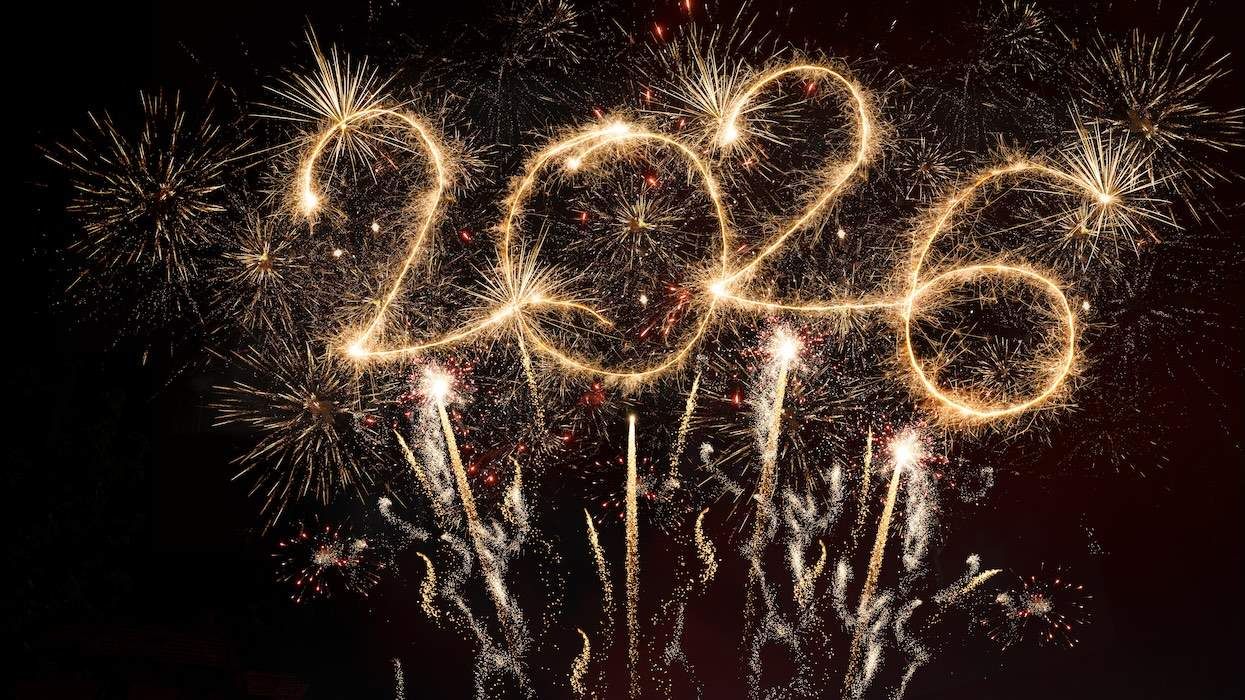


































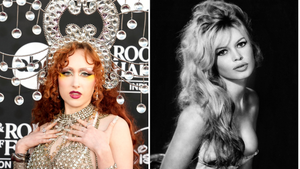













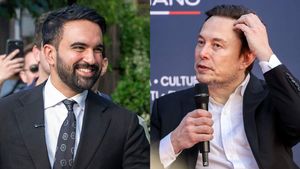


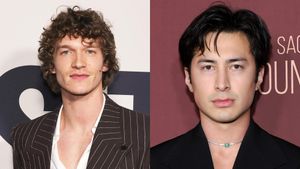
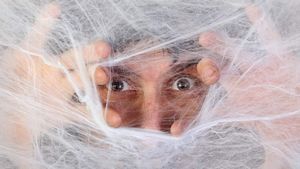







Charlie Kirk DID say stoning gay people was the 'perfect law' — and these other heinous quotes